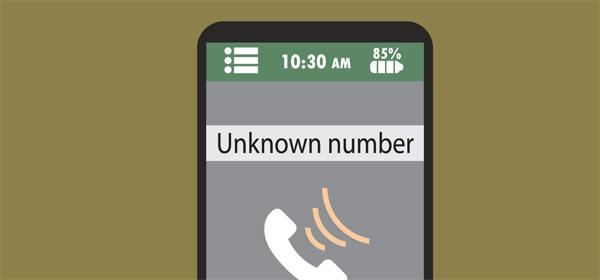
Before the onslaught of the pandemic, you almost certainly didn’t use your smartphone to form phone calls considerably . Now carriers are reporting surges in calls as we seek more personal connections while following social distancing guidelines.
Did you recognize that you simply also can make phone calls using your computer, laptop, or tablet? Tap or click here for the steps, whether you’re employing a Windows, Mac, or Chrome system.
Not everyone you call needs or should have your telephone number . the selection is up to you.
1. Use *67 to cover your telephone number
On a per-call basis, you can’t beat *67 at hiding your number. This trick works for smartphones and landlines. Open your phone’s keypad and dial * – 6 – 7, followed by the amount you’re trying to call.
The free process hides your number, which can show abreast of the opposite end as “Private” or “Blocked” when reading on caller ID . you’ll need to dial *67 whenever you would like your number blocked.
2. Block your number by default iOS and Android
If you own an iPhone or Android device, automatically block your number by adjusting one simple setting. Your number will appear private for each call you create .
To block your number on iPhone:
1. attend Settings, Tap Phone
2. Press Show My caller ID
3. Use the toggle to point out or hide your number
Note: Verizon Wireless doesn’t allow this feature, but I’ll show you what you’ll do that within the next step.
To block your number on Android:
1. Open the Phone app, and open the Menu
2. Select Settings, then Call settings
3. Click on Additional settings, then caller ID
4. Choose “Hide number” and your number are going to be hidden
To reverse this feature on Android, choose “Show number” or “Network default”
You can also use *82 to unblock your number just in case your call gets rejected temporarily. Some providers and users will automatically block private numbers, so using this code will assist you bypass this filter.
Blocking your number can go an extended way in stopping annoying robocalls. Did you notice less within the last month? Tap or click to ascertain why robocalls are getting to ramp copy very soon.
3. Ask your carrier to dam your number
Not every device has an equivalent process for blocking your telephone number , and it’s a pain to dam on a per-call basis. That’s where your wireless carrier can help.
If you’re employing a different quite phone (or want the lines on your account private), ask your carrier to dam all outgoing calls.
Connect to your carrier by calling 611. confirm to inform the recording you would like to talk to “customer support” or “technical support.” Some carriers’ lines send you to the bill-pay department automatically.
Once your carrier sets you up with a personal number, you’ll still use *82 if you run into call rejection. This step temporarily unblocks your number on a per-call basis.
While you’re on the phone, call your internet provider, too. I’ve got 7 steps to assist you save on your monthly internet bill.
4. Skip dialing from your own number and use a burner app
A burner app could be what you would like if you’re not keen on mucking around together with your phone or carrier settings. These apps use your internet data to form calls, which effectively gives your phone a second number to use.
There are many burner apps you’ll download for iOS or Android, but these are my three favorites.
Burner is one among the foremost popular apps on iOS and Android devices permanently reason. you’ll use the app to route your calls on to your secondary number, which suggests you don’t even got to bother hiding it. The app comes with a 7-day free trial and costs $5 per line per month afterward.
Hushed isn’t free, but it’s less expensive than many competitors. At just $2 per week, you’ll get 60 texts and 20 call minutes. you’ll cancel at any time. A $5 monthly unlimited plan is additionally available, but even on the essential plan lets Hushed users ask each other for free of charge .
Google Voice allows you to choose a replacement telephone number to form voice calls, texts and audio messages for free of charge . All you’ll got to start is a lively Google account.
Unlike the opposite options, you don’t got to pay a monthly fee with Google Voice. It uses your existing phone minutes and data, but the amount that shows are going to be your Google Voice number.
5. Take hold of your landline, too
Whether you’re on mobile or landline, there are many useful codes which will assist you control your privacy. Here’s an inventory of a number of the foremost common “star codes” you’ll use together with your touch-tone keypad:
*57 – Trace Call: Traces the amount of the last incoming call received. Useful when the decision warrants action .
*60 – Call Block: Prevents calls from select phone numbers and provides callers a recording that says you’re not accepting calls.
*67 – caller ID Block: Hides your telephone number on caller ID systems.
*69 – Call Return: Redials the last number that called you.
*70 – Call Waiting: Places your turn hold so you’ll answer another.
*72 – Call Forwarding: Forward your call to a different telephone number .
*77 – Anonymous Call Rejection: Blocks calls from private callers.
*80 – Disable Call Block (*60)
*82 – Disable caller ID Block (*67)
*87 – Disable Anonymous Call Rejection (*77)











